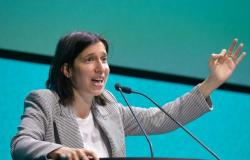The exhibition itinerary, organized by thematic areas, analyses, thanks to Bartolena’s extraordinary expertise, both the movements and iconographic trends, as well as the biography and personality of the individual artists, offering the visitor the opportunity to discover a dynamic and surprising universe , artistically and intellectually very refined and experimental, and to investigate the society of the time following a narrative thread that aims to shed light on a theme that is not always so well known, such as the Lombard artistic scene of the nineteenth century.
The exhibition, while focusing on the Milanese environment, in particular the teaching of the Brera Academy, also investigates the situation in the other Lombardy provinces. In the Exhibition Hall of the Civic Museums of Monza, a section dedicated to the artistic scene of Monza has been set up, the birthplace of extraordinary painters such as Pompeo Mariani, Moses Bianchi, Eugenio Spreafico and Emilio Borsa.
The exhibition opens with the romantic season in which the figure of Francesco Hayez, master and model of entire generations of artists, stands out. His long presence in the role of director at Brera has left a profound mark on the cultural direction of Milan. Together with Hayez, the works of some painters who learned from him for their own career and those of contemporary masters such as Giacomo Trecourt, Massimo d’Azeglio and Giuseppe Molteni are exhibited.
The next section is dedicated to “view artists” and to the “perspectives” of the first half of the century, such as Giovanni Migliara, Angelo Inganni and Luigi Bisi, who with their city views and scenes of daily life also offer a precious glimpse into urban planning and the society of the time.
The itinerary then moves on to the period of the wars of Independence, with paintings focused on the themes of the Risorgimento, among which authors such as Gerolamo and Domenico Induno stand out, also known for their genre scenes, which narrate the life of the less well-off classes and for those, elegant and frivolous, which tell of imaginary romantic encounters set in their bourgeois living rooms.
The visionary and unique personality of Giovanni Carnovali known as Piccio introduces the significant change of direction in the second half of the century. An artist out of his time, an extraordinary forerunner of enlightening linguistic solutions for subsequent generations, Piccio was fundamental for authors such as Federico Faruffini and, above all, Tranquillo Cremona. The first, a tormented and unresolved man, will open the doors to modern interpretations of historicist and literary painting; the second, with Daniele Ranzoni and Giuseppe Grandi, will found the Scapigliatura, a movement that expressed itself both in literature and in the visual arts, and will seek answers to his existential doubts and his rebellious vocation in ostentatiously “bohemian” attitudes and with an experimental artistic language and modern, on which much of the painting of the following decades will have its roots.
The exhibition also offers a series of focuses on some artists who are perhaps not so well-known, but who profoundly influenced the developments of painting of the time, such as the aforementioned Piccio and Faruffini, but also such as Luigi Conconi.
In the second half of the nineteenth century also the genre of landscape garnered great fortune. There are many canvases that portray the Brianza countryside, the Alpine peaks and the suggestive waters of the lakes, painted by artists such as Eugenio Gignous, Silvio Poma and Filippo Carcano.
The exhibition stops at the threshold of the birth of Divisionism, with some early works by Previati and Segantini, when their poetics were still very close to Scapigliatura, although already sensitive to the atmospheres of Symbolism.
The exhibition can be visited from Wednesday to Friday from 10am to 1pm and from 2pm to 7pm and on Saturdays, Sundays and holidays from 10am to 8pm (the ticket office closes one hour before closing time).
The section at the Civic Museums is open during the museum hours: until 31 May on Wednesdays from 10am to 1pm and from 3pm to 6pm, on Thursdays from 3pm to 6pm and on Fridays, Saturdays and Sundays from 10am to 1pm and from 3pm to 6pm; from June 1st on Wednesdays from 3pm to 6pm; on Thursdays from 3pm to 6pm and from 8pm to 11pm and on Fridays, Saturdays and Sundays from 10am to 1pm and from 3pm to 6pm.
Further information is available on the websites www.vidicultural.com, www.reggiadimonza.it and www.museicivicimonza.it. You can contact the organizers via email at the email address This email address is protected from spambots. You need JavaScript enabled to view it..




